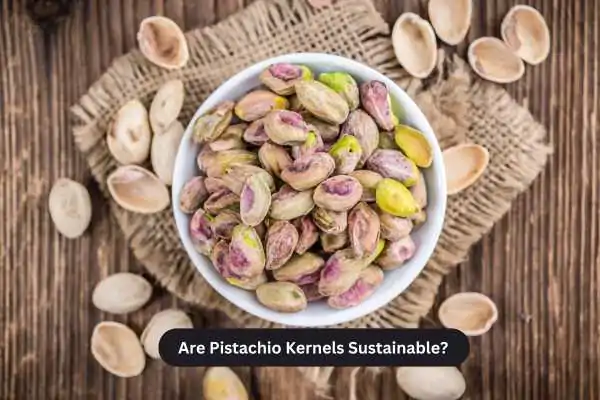In an era of climate consciousness and environmentally responsible eating, UK consumers are more focused than ever on understanding the sustainability of the foods they enjoy. Among the growing list of popular plant-based snacks, pistachio kernels have found their place in British pantries, thanks to their flavour, versatility, and nutritional value. But the question remains—are pistachio kernels sustainable?

This article explores the environmental impact of pistachio cultivation, supply chains, and their role in sustainable agriculture, helping you make informed choices as a conscious consumer.
Understanding Pistachio Farming
Pistachios grow primarily in arid and semi-arid climates. The leading producers are Iran, the United States (especially California), Turkey, and to a lesser extent, countries like Greece and Syria. Though pistachio trees are hardy and can withstand challenging conditions, their environmental footprint depends significantly on how and where they are cultivated.
Unlike water-intensive crops such as almonds, pistachios require significantly less irrigation. According to agricultural studies, pistachio trees use about 50% less water than almond trees per kilogram of nuts produced. This makes pistachios a more water-efficient choice, especially in drought-prone areas.
Moreover, pistachio trees are long-living perennials, often yielding nuts for up to 70–100 years. This longevity reduces the need for frequent replanting and tilling, thereby helping to preserve soil structure and reduce erosion over time.
Water Usage and Environmental Impact
While pistachios are more water-efficient compared to other nuts, the sustainability question is more complex when considering the full environmental picture.
In regions like California, where much of the world’s pistachio supply is produced, water scarcity is a serious issue. Though pistachio trees can survive with less water, commercial-scale farms often still rely heavily on irrigation. Sustainable pistachio farming thus depends not just on the crop itself but on the water management practices in place.
The UK imports the majority of its pistachios from these high-production regions. This raises additional sustainability concerns around water use in source countries, especially in the context of global climate change and regional droughts.
Pesticide and Fertiliser Use
Another key component of pistachio sustainability is the use of chemicals in farming. Conventional pistachio farming may involve synthetic pesticides and fertilisers that can leach into the soil and waterways, affecting biodiversity.
However, a growing number of producers are adopting organic and integrated pest management (IPM) practices. These methods aim to minimise chemical usage, preserve beneficial insects, and support natural soil health. Organic pistachios, though more expensive, offer a more sustainable option for UK buyers who are concerned about their environmental footprint.
Transportation and Carbon Footprint
Since pistachios are not grown commercially in the UK, their sustainability is also influenced by the carbon emissions involved in long-distance transportation. Air freight is the most carbon-intensive mode of transport, but fortunately, most pistachios are shipped by sea, which is relatively more carbon-efficient per kilogram of product.
Still, the carbon footprint of imported pistachios is notable compared to locally grown nuts or plant-based alternatives. However, when eaten in moderation as part of a balanced diet, their overall environmental impact can be kept within reasonable limits.
Packaging and Waste
Sustainability doesn’t stop at the farm. How pistachios are processed, packaged, and sold also matters. In the UK, pistachio kernels are often available in plastic packaging, which raises concerns about single-use plastics.
To address this, some brands are now offering pistachios in recyclable or compostable packaging. Bulk-buy stores and zero-waste shops also provide options for packaging-free purchases. UK consumers can make more sustainable choices by supporting these initiatives and recycling responsibly.
Social and Economic Sustainability
Beyond environmental factors, pistachio sustainability also includes ethical farming practices. Some pistachio farms in regions like Iran and Turkey are family-owned and rely on traditional, low-impact agricultural methods. Supporting such producers can have positive socio-economic effects, helping to sustain local communities and prevent exploitation.
Consumers should look for certifications like Fairtrade, Rainforest Alliance, or organic labels that indicate responsible sourcing. These not only ensure better environmental standards but also promote fair labour practices.
Are Pistachio Kernels a Sustainable Choice for the UK?
Pistachio kernels can be a sustainable snack choice—if sourced and consumed mindfully. Their relatively low water usage, long tree life span, and growing adoption of organic farming practices make them more eco-friendly than many other nuts.
However, their sustainability is not absolute. Environmental impact varies depending on farming practices, water usage, transportation, and packaging. For UK consumers, choosing organic, ethically sourced pistachios, ideally in low-waste packaging, is the best way to enjoy this nut while minimising environmental harm.
Conclusion
As sustainability becomes a key factor in food choices, pistachio kernels stand out as a relatively green option—especially when compared to more resource-intensive crops. While not without their challenges, pistachios offer a path toward more sustainable snacking, provided that both producers and consumers commit to responsible practices.
When shopping for pistachios in the UK, look for transparent sourcing, sustainable packaging, and eco-conscious certifications. With informed choices, pistachio lovers can support a food system that’s better for the planet—and still satisfy their cravings.

